-
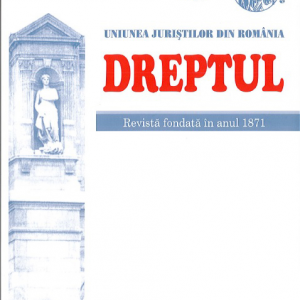 Recursul în casație este inadmisibil dacă cererea formulată nu conține mențiunile privitoare la hotărârea judecătorească atacată și la cazul de casare invocat. Absența celor două mențiuni influențează negativ inclusiv îndeplinirea celorlalte condiții de admisibilitate a recursului în casație. În primul rând, atât timp cât nu se menționează o hotărâre judecătorească anume, nu poate fi verificată condiția de admisibilitate referitoare la obiectul recursului în casație și nu se poate răspunde la întrebarea dacă recursul în casație s-a formulat de către o persoană ce are calitatea de parte în sens procesual. În al doilea rând, inexistența vreunei mențiuni privitoare la hotărârea judecătorească atacată constituie un impediment în calea determinării momentului de la care termenul de recurs în casație a început și a celui la care s-a împlinit. În al treilea rând, lipsa mențiunii privitoare la cazul de casare invocat face să lipsească și motivarea incidenței vreunui asemenea caz în speță.
Recursul în casație este inadmisibil dacă cererea formulată nu conține mențiunile privitoare la hotărârea judecătorească atacată și la cazul de casare invocat. Absența celor două mențiuni influențează negativ inclusiv îndeplinirea celorlalte condiții de admisibilitate a recursului în casație. În primul rând, atât timp cât nu se menționează o hotărâre judecătorească anume, nu poate fi verificată condiția de admisibilitate referitoare la obiectul recursului în casație și nu se poate răspunde la întrebarea dacă recursul în casație s-a formulat de către o persoană ce are calitatea de parte în sens procesual. În al doilea rând, inexistența vreunei mențiuni privitoare la hotărârea judecătorească atacată constituie un impediment în calea determinării momentului de la care termenul de recurs în casație a început și a celui la care s-a împlinit. În al treilea rând, lipsa mențiunii privitoare la cazul de casare invocat face să lipsească și motivarea incidenței vreunui asemenea caz în speță. -
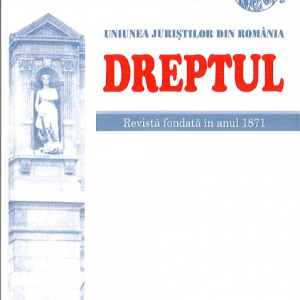 The information about the patient’s state of health, diagnosis, treatment, personal data is confidential even after his death. There is an obligation of the physician to keep the professional secrecy, which is opposable to the patient’s family members and which is maintained even after the person has ceased to be his patient or is deceased. The present study discusses aspects on the impossibility of proving a possible malpractice case, in the absence of the access of the patient’s family to medical documents, medical observations, medical sheets, and medical treatment applied to the patient deceased in the meantime. We have in view that Article 21 of the Law No 46/2003 on patient’s rights stipulates that all information regarding the patient’s condition, the results of the investigations, the diagnosis, the prognosis, the treatment, the personal data are confidential even after his death, and Article 22 of the same normative act provides that confidential information may be provided only if the patient gives his explicit consent or if the law expressly requires so. Similarly, Article 18 of the Code of Professional Deontology states that the physician’s obligation to keep professional secrecy is also opposableagainst the members of the family of that person concerned and such an obligation to preserve the professional secrecy persists also after the person in question ceased to be a his patient or deceased. Starting from these provisions, it is raised the question of the impossibility to prove a possible malpractice case, in the absence of the access of the patient’s family to medical documents, observation sheets and post-surgery treatment of the patient who deceased in the meantime.
The information about the patient’s state of health, diagnosis, treatment, personal data is confidential even after his death. There is an obligation of the physician to keep the professional secrecy, which is opposable to the patient’s family members and which is maintained even after the person has ceased to be his patient or is deceased. The present study discusses aspects on the impossibility of proving a possible malpractice case, in the absence of the access of the patient’s family to medical documents, medical observations, medical sheets, and medical treatment applied to the patient deceased in the meantime. We have in view that Article 21 of the Law No 46/2003 on patient’s rights stipulates that all information regarding the patient’s condition, the results of the investigations, the diagnosis, the prognosis, the treatment, the personal data are confidential even after his death, and Article 22 of the same normative act provides that confidential information may be provided only if the patient gives his explicit consent or if the law expressly requires so. Similarly, Article 18 of the Code of Professional Deontology states that the physician’s obligation to keep professional secrecy is also opposableagainst the members of the family of that person concerned and such an obligation to preserve the professional secrecy persists also after the person in question ceased to be a his patient or deceased. Starting from these provisions, it is raised the question of the impossibility to prove a possible malpractice case, in the absence of the access of the patient’s family to medical documents, observation sheets and post-surgery treatment of the patient who deceased in the meantime. -
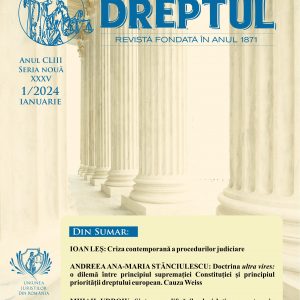
-
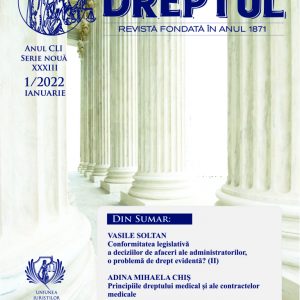 Family relationships are an area of great interest due to its intimacy and sensitivity. Because of the unpredictability of modern life, many families are falling apart. Thus, the issue of dissolution of marriage, whether through divorce or separation, is of paramount importance for modern society. Both the European Union and some Member States, especially the predominantly Catholic ones, have adapted to religious realities and regulated spouses’ separation through secular laws. The purpose of this article is to reveal that the Romanian law has the institution of spouses’ separation which produces, however, only effects of canon law, and not of civil law. The methods used in support of our thesis are analysis and synthesis. In Romania, the state recognized the Canonical Codes of the Roman-Catholic and Oriental Churches that provide for separation. But it denies any civil, secular effects of the institution. It is high time for the Romanian legislator to regulate the institution of spouses’ separation whether by altering the Civil Code or through a concordat between the state and the Holy See. The secular effects of spouses’ separation will protect the religious freedom of the Catholic people and the traditions of the Roman Catholic denomination. Moreover, introducing legal separation in the Romanian law will ensure a better application of the private international law of the European Union which provides for the international jurisdiction and for the law applicable to such separation.
Family relationships are an area of great interest due to its intimacy and sensitivity. Because of the unpredictability of modern life, many families are falling apart. Thus, the issue of dissolution of marriage, whether through divorce or separation, is of paramount importance for modern society. Both the European Union and some Member States, especially the predominantly Catholic ones, have adapted to religious realities and regulated spouses’ separation through secular laws. The purpose of this article is to reveal that the Romanian law has the institution of spouses’ separation which produces, however, only effects of canon law, and not of civil law. The methods used in support of our thesis are analysis and synthesis. In Romania, the state recognized the Canonical Codes of the Roman-Catholic and Oriental Churches that provide for separation. But it denies any civil, secular effects of the institution. It is high time for the Romanian legislator to regulate the institution of spouses’ separation whether by altering the Civil Code or through a concordat between the state and the Holy See. The secular effects of spouses’ separation will protect the religious freedom of the Catholic people and the traditions of the Roman Catholic denomination. Moreover, introducing legal separation in the Romanian law will ensure a better application of the private international law of the European Union which provides for the international jurisdiction and for the law applicable to such separation. -
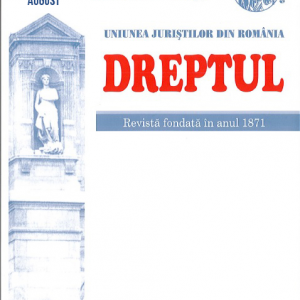 The international treaties on human rights are the fundamental conventional sources de jure applicable in this area and at the level of the European Union. The evolution of their content relevant to the fundamental rights is spectacular, starting from the lack of interest in terms of regulations expressed in the Treaty of Rome signed in 1957, to the rules of reference to the (European) Convention for the protection of human rights and fundamental freedoms contained in the Single European Act or the Treaty of Maastricht and up to the establishment of the European Union’s own protection mechanism under the Treaty of Lisbon and the Charter of fundamental rights.
The international treaties on human rights are the fundamental conventional sources de jure applicable in this area and at the level of the European Union. The evolution of their content relevant to the fundamental rights is spectacular, starting from the lack of interest in terms of regulations expressed in the Treaty of Rome signed in 1957, to the rules of reference to the (European) Convention for the protection of human rights and fundamental freedoms contained in the Single European Act or the Treaty of Maastricht and up to the establishment of the European Union’s own protection mechanism under the Treaty of Lisbon and the Charter of fundamental rights. -
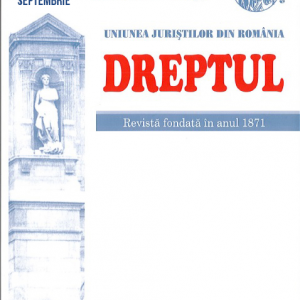 După o părere foarte răspândită, întreaga operă legislativă a anilor 1864–1866 ar fi fost o simplă traducere a unor legiuiri apusene, întocmită abia în câteva săptămâni.
După o părere foarte răspândită, întreaga operă legislativă a anilor 1864–1866 ar fi fost o simplă traducere a unor legiuiri apusene, întocmită abia în câteva săptămâni. -
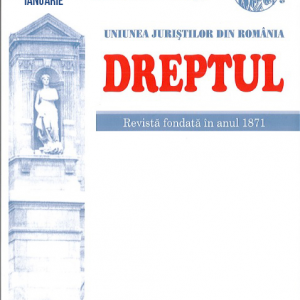 This paper enumerates and analyses the main sources of the Romanian fiscal law.
This paper enumerates and analyses the main sources of the Romanian fiscal law. -
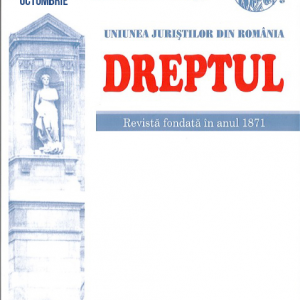 The theme of this study concerns the distinction between the source of fiscal obligations (chargeable event of the tax base), on the one hand, and the individualization of these obligations through various fiscal administrative acts, issued for the application of the legal rules of tax law, on the other hand. In this regard, the author considers both the current Fiscal Procedure Code (the Government Ordinance No 92/2003, in force until 31 December 2015) and the new Fiscal Procedure Code (the Law No 207/2015), which expressly repeals the current Fiscal Procedure Code and shall enter into force on 1 January 2016. The author’s conclusion is that the source of the fiscal obligations is not the law itself, but the legal act, licit or illicit, which gives rise to the fiscal obligatory relation under the terms provided by law and materialized in the individual acts of application of law.
The theme of this study concerns the distinction between the source of fiscal obligations (chargeable event of the tax base), on the one hand, and the individualization of these obligations through various fiscal administrative acts, issued for the application of the legal rules of tax law, on the other hand. In this regard, the author considers both the current Fiscal Procedure Code (the Government Ordinance No 92/2003, in force until 31 December 2015) and the new Fiscal Procedure Code (the Law No 207/2015), which expressly repeals the current Fiscal Procedure Code and shall enter into force on 1 January 2016. The author’s conclusion is that the source of the fiscal obligations is not the law itself, but the legal act, licit or illicit, which gives rise to the fiscal obligatory relation under the terms provided by law and materialized in the individual acts of application of law. -
 The premises for the adoption of the Decree No 195/2020 on the establishment of the state of emergency in Romania were the evolution of the epidemiological situation in Romania and the assessment of public health risk for the next period, which indicates a massive increase in the number of people infected with SARS-CoV-2 coronavirus, having regard to the fact that failure to take urgent, exceptionally social and economic measures to limit SARS-CoV-2 coronavirus infection among the population would have a particularly serious impact, mainly on the right to life, and, in the alternative, on the right to health of individuals
The premises for the adoption of the Decree No 195/2020 on the establishment of the state of emergency in Romania were the evolution of the epidemiological situation in Romania and the assessment of public health risk for the next period, which indicates a massive increase in the number of people infected with SARS-CoV-2 coronavirus, having regard to the fact that failure to take urgent, exceptionally social and economic measures to limit SARS-CoV-2 coronavirus infection among the population would have a particularly serious impact, mainly on the right to life, and, in the alternative, on the right to health of individuals -
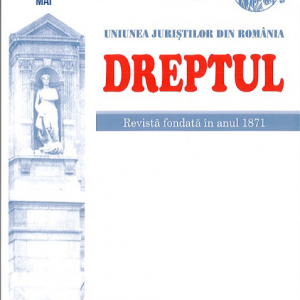 This study analyzes the new structure of the judgment based on the guilty plea, describes the conditions of application of this simplified procedure in comparison with the previous regulation, the rules of conduct of the special judicial investigation, the solutions which can be issued by courts in order to solve the criminal action, all these by emphasizing the advantages or shortcomings of the new institution.
This study analyzes the new structure of the judgment based on the guilty plea, describes the conditions of application of this simplified procedure in comparison with the previous regulation, the rules of conduct of the special judicial investigation, the solutions which can be issued by courts in order to solve the criminal action, all these by emphasizing the advantages or shortcomings of the new institution. -
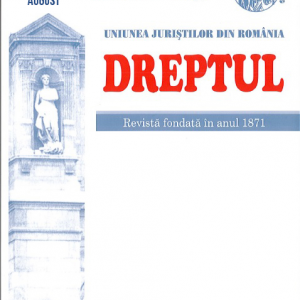 This study sets some reference points for a new institution regulated by the Criminal Procedure Code – the judge of rights and freedoms – from a perspective which stresses its role in protecting the rights and fundamental freedoms, as they are established by the Constitution and by the international treaties on human rights to which Romania is a party.
This study sets some reference points for a new institution regulated by the Criminal Procedure Code – the judge of rights and freedoms – from a perspective which stresses its role in protecting the rights and fundamental freedoms, as they are established by the Constitution and by the international treaties on human rights to which Romania is a party. -
 The topic covered in this study is related to one of the few polemics that took place in the pages of the Romanian Law Magazine in the ’80s. In Issue 1/1987 of the magazine, Octavian Cojocaru criticized in the study „Judicial rehabilitation. Application made by the spouse or close relatives, after the death of the convicted person, before the execution of the sentence” a correct sentence of the Suceava County Tribunal, pronounced in 1985, in disagreement with the provisions of the Criminal Code in force at that time and against a decision of the Supreme Tribunal, according to which the convicted person who had died before the execution of the sentence could no longer be rehabilitated. Later, in 1988, Valeriu Ciucă, a judge at the same Suceava County Tribunal, published in the same magazine a critical article related to the case law note signed by Octavian Cojocaru, which shows, with solid arguments, that the decision pronounced by Suceava County Tribunal was correct from a juridical point of view.
The topic covered in this study is related to one of the few polemics that took place in the pages of the Romanian Law Magazine in the ’80s. In Issue 1/1987 of the magazine, Octavian Cojocaru criticized in the study „Judicial rehabilitation. Application made by the spouse or close relatives, after the death of the convicted person, before the execution of the sentence” a correct sentence of the Suceava County Tribunal, pronounced in 1985, in disagreement with the provisions of the Criminal Code in force at that time and against a decision of the Supreme Tribunal, according to which the convicted person who had died before the execution of the sentence could no longer be rehabilitated. Later, in 1988, Valeriu Ciucă, a judge at the same Suceava County Tribunal, published in the same magazine a critical article related to the case law note signed by Octavian Cojocaru, which shows, with solid arguments, that the decision pronounced by Suceava County Tribunal was correct from a juridical point of view. -
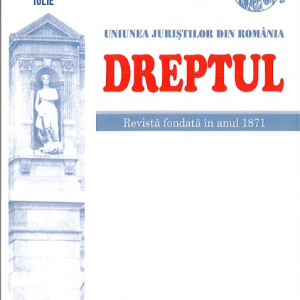 Dealing with the issue of the Romanian judge, as a guarantor of the public international law enforcement, the author discusses: the issue of the Romanian judge’s power to interpret the conventional international law; issues regarding difficulties in the enforcement of the public international law by the Romanian courts due to the absence of similar internal rules; decisions of the international courts of justice and their effects on the internal legal proceedings (Romanian).
Dealing with the issue of the Romanian judge, as a guarantor of the public international law enforcement, the author discusses: the issue of the Romanian judge’s power to interpret the conventional international law; issues regarding difficulties in the enforcement of the public international law by the Romanian courts due to the absence of similar internal rules; decisions of the international courts of justice and their effects on the internal legal proceedings (Romanian). -
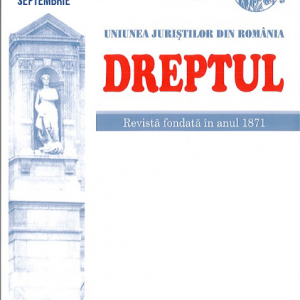 Mărturisesc că, atunci când am ales titlul acestui studiu, am interferat cu modelul de prezentare în două părți, introdus de un cunoscut colaborator și prieten, specialist în legile internetului, Bogdan Manolea, care, cu ceva ani în urmă, într-o prestigioasă conferință cu prezență internațională, identifica o primă parte anarhică și o a doua tehnică a discursului său. De ce o perspectivă românească? Pentru a sublinia critic modelul, mereu altfel, de abordare a reformelor din sistemul judiciar românesc, pe tiparul „teoriei mixte”, pe care, ani de-a rândul, generație după generație, la aproape toate disciplinele de studiu, dascălii noștri au încercat să ne-o inoculeze ca pe un vaccin, în dorința de a ne obișnui, în realitate, cu compromisul, vecin cu improvizația, de la care a împrumutat caracterul definitiv. Noi nu copiem, noi inovăm, mințindu-ne adesea că adaptăm diverse instituții, proceduri, reguli din tot atât de diverse surse, deși, funcțional, asemenea corpului biologic, aceste grefe haotice și repetate ajung să fie refuzate sau să schimonosească organismul nostru judiciar, altfel suficient de robust prin robustețea componenților săi.
Mărturisesc că, atunci când am ales titlul acestui studiu, am interferat cu modelul de prezentare în două părți, introdus de un cunoscut colaborator și prieten, specialist în legile internetului, Bogdan Manolea, care, cu ceva ani în urmă, într-o prestigioasă conferință cu prezență internațională, identifica o primă parte anarhică și o a doua tehnică a discursului său. De ce o perspectivă românească? Pentru a sublinia critic modelul, mereu altfel, de abordare a reformelor din sistemul judiciar românesc, pe tiparul „teoriei mixte”, pe care, ani de-a rândul, generație după generație, la aproape toate disciplinele de studiu, dascălii noștri au încercat să ne-o inoculeze ca pe un vaccin, în dorința de a ne obișnui, în realitate, cu compromisul, vecin cu improvizația, de la care a împrumutat caracterul definitiv. Noi nu copiem, noi inovăm, mințindu-ne adesea că adaptăm diverse instituții, proceduri, reguli din tot atât de diverse surse, deși, funcțional, asemenea corpului biologic, aceste grefe haotice și repetate ajung să fie refuzate sau să schimonosească organismul nostru judiciar, altfel suficient de robust prin robustețea componenților săi. -
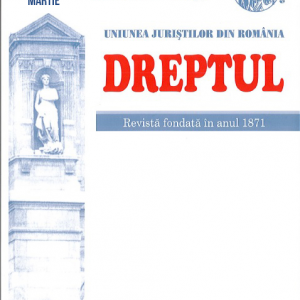 Law does obviously not benefit from the privilege of having its own exhaustive language. We might say that most concepts used in law are borrowed from other branches of knowledge. The quite rare concepts that are its own often do not receive a definition that can be classified, according to the methodology of the act of definition itself, as “legal”. The amalgamation of legal terminology with the economic, political, sociological or philosophical terminology, without revising the concepts and without their clear understanding in the areas of knowledge from where they come makes the doctrine and the case law too often flat and stereotyped, if not even chaotic from the conceptual point of view. Lawyers are no longer seen as persons of learning, who try to explain the nature of things through justice, but as simple technicians, who apply concepts taken from other social-human sciences. Under these conditions, one of the fundamental problems for lawyers is to explain a fact that seems to be overlooked by our current culture: what is meant by a legal concept? Afterward, it becomes equally important to understand the way in which the non-legal concepts used in law should be revised, namely what the standards of the legal definition of concepts are. The above-mentioned article attempts to answer to these challenges.
Law does obviously not benefit from the privilege of having its own exhaustive language. We might say that most concepts used in law are borrowed from other branches of knowledge. The quite rare concepts that are its own often do not receive a definition that can be classified, according to the methodology of the act of definition itself, as “legal”. The amalgamation of legal terminology with the economic, political, sociological or philosophical terminology, without revising the concepts and without their clear understanding in the areas of knowledge from where they come makes the doctrine and the case law too often flat and stereotyped, if not even chaotic from the conceptual point of view. Lawyers are no longer seen as persons of learning, who try to explain the nature of things through justice, but as simple technicians, who apply concepts taken from other social-human sciences. Under these conditions, one of the fundamental problems for lawyers is to explain a fact that seems to be overlooked by our current culture: what is meant by a legal concept? Afterward, it becomes equally important to understand the way in which the non-legal concepts used in law should be revised, namely what the standards of the legal definition of concepts are. The above-mentioned article attempts to answer to these challenges. -
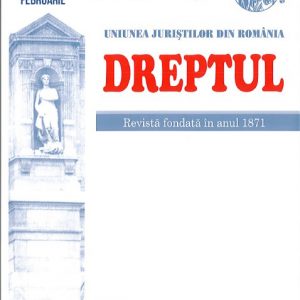 The author of this study, starting from the premise that both the employees of public authorities/institutions (who carry on their activity based on an individual labour contract), as well as the civil servants of these budgetary structures (who carry on their activity based on a job relation) have a legal labour relation each, comes to the conclusion that the present jurisdictional system regarding the labour conflicts (the disputes) of the two categories of personnel mentioned (the labour conflicts of the employees of the public authorities/institutions are settled by the labour jurisdiction courts, while the same type of cases, in case of civil servants, fall within the jurisdiction of administrative disputes courts) is obviously unnatural and discriminatory. This being the case, it is proposed the unification of the jurisdiction in this respect, in the sense that both for the employees of the public authorities/institutions and for the civil servants in their service, the competence to settle the labour conflicts is going to pertain to the labour jurisdiction courts.
The author of this study, starting from the premise that both the employees of public authorities/institutions (who carry on their activity based on an individual labour contract), as well as the civil servants of these budgetary structures (who carry on their activity based on a job relation) have a legal labour relation each, comes to the conclusion that the present jurisdictional system regarding the labour conflicts (the disputes) of the two categories of personnel mentioned (the labour conflicts of the employees of the public authorities/institutions are settled by the labour jurisdiction courts, while the same type of cases, in case of civil servants, fall within the jurisdiction of administrative disputes courts) is obviously unnatural and discriminatory. This being the case, it is proposed the unification of the jurisdiction in this respect, in the sense that both for the employees of the public authorities/institutions and for the civil servants in their service, the competence to settle the labour conflicts is going to pertain to the labour jurisdiction courts. -
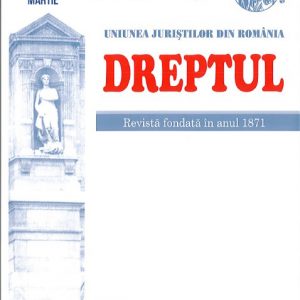 This paper aims to analyze the difficulties which the Romanian judge faces, in the attempt to ensure the exigencies imposed by Article 6 of the European Convention on Human Rights in matters of reasonable time. In this regard, the paper is structured in three parts: the first part briefly presents the Court’s standard as regards the reasonable time; the second part analyzes the compatibility of an institution recently introduced in the Civil Procedure Code – the contestation concerning the delay of the trial (Articles 522–526 of the Civil Procedure Code) – to the notion of effective remedy, within the meaning of Article 6 and Article 13 of the Convention; the last part emphasizes, based on some jurisprudential examples, the risks which the national judge must manage very carefully when he tries to ensure the reasonable time: the risk of acting ultra vires and the risk of creating a non-unitary case-law, thus generating the premises of some new violations of Article 6 of the Convention.
This paper aims to analyze the difficulties which the Romanian judge faces, in the attempt to ensure the exigencies imposed by Article 6 of the European Convention on Human Rights in matters of reasonable time. In this regard, the paper is structured in three parts: the first part briefly presents the Court’s standard as regards the reasonable time; the second part analyzes the compatibility of an institution recently introduced in the Civil Procedure Code – the contestation concerning the delay of the trial (Articles 522–526 of the Civil Procedure Code) – to the notion of effective remedy, within the meaning of Article 6 and Article 13 of the Convention; the last part emphasizes, based on some jurisprudential examples, the risks which the national judge must manage very carefully when he tries to ensure the reasonable time: the risk of acting ultra vires and the risk of creating a non-unitary case-law, thus generating the premises of some new violations of Article 6 of the Convention. -
 If in ancient times it was often confounded with legal science and constituted a genuine source of law, gradually, case-law transformed into a form of explanation, addition, and elimination of obscurity of the legal text, by the judge, in the process of interpreting and enforcing the law. At the same time, its relations to the doctrine have also evolved, the latter being called upon today to decode case-law rules, assuring their clarity and complete expression of their meanings, from the „inside” of the process of creating law. Case-law phenomenon is an object of analysis for the legal science, in terms of external factors that configure and influence it. The case-law revival noticed partially and specifically after 1989 also in Romania, given the transition, is expected to fully manifest itself in the following period, just after the end of the legislative reform, realized by the adoption and entering into force of the new codes.
If in ancient times it was often confounded with legal science and constituted a genuine source of law, gradually, case-law transformed into a form of explanation, addition, and elimination of obscurity of the legal text, by the judge, in the process of interpreting and enforcing the law. At the same time, its relations to the doctrine have also evolved, the latter being called upon today to decode case-law rules, assuring their clarity and complete expression of their meanings, from the „inside” of the process of creating law. Case-law phenomenon is an object of analysis for the legal science, in terms of external factors that configure and influence it. The case-law revival noticed partially and specifically after 1989 also in Romania, given the transition, is expected to fully manifest itself in the following period, just after the end of the legislative reform, realized by the adoption and entering into force of the new codes. -
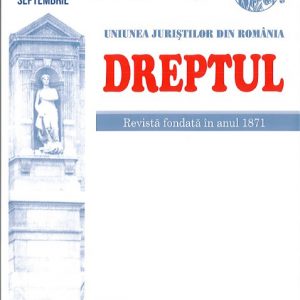 Foarte mulți autori moderni întrebuințează în lucrările lor expresia jus ad rem pentru a desemna dreptul de creanță, opunându-l astfel dreptului real jus in re. Această expresie a avut o influență considerabilă în evoluarea instituțiilor juridice. Scopul nostru este de a examina aici cum au fost aduși autorii să numească dreptul de creanță jus ad rem, precum și cele două mai importante consecințe ale acestui fel de a concepe natura dreptului de creanță: dispariția obligației chirographare și transformarea efectelor vânzărei.
Foarte mulți autori moderni întrebuințează în lucrările lor expresia jus ad rem pentru a desemna dreptul de creanță, opunându-l astfel dreptului real jus in re. Această expresie a avut o influență considerabilă în evoluarea instituțiilor juridice. Scopul nostru este de a examina aici cum au fost aduși autorii să numească dreptul de creanță jus ad rem, precum și cele două mai importante consecințe ale acestui fel de a concepe natura dreptului de creanță: dispariția obligației chirographare și transformarea efectelor vânzărei. -
 The climate dispute, developed explosively in the last decade, has had a first experience also at the level of EU law through People’s Climate Case (2018) in which 10 families and a civic association have brought an action before the EU Tribunal against the European Parliament and the European Commission for the insufficiency of the objectives assumed in the matter of climate changes. It was required the cancellation of several European Union legislative texts in the clime package and a compensation for the prejudice claimed to be incurred in this context. By the Ordinance of 8 May 2019, the action was dismissed as inadmissible, as the conditions of Article 263 (4) TFEU were not met, whereas there had been challenged legislative texts which did not concern and did not affect the applicants individually. The case law thus created leads to conclusions notable for the climate justice.
The climate dispute, developed explosively in the last decade, has had a first experience also at the level of EU law through People’s Climate Case (2018) in which 10 families and a civic association have brought an action before the EU Tribunal against the European Parliament and the European Commission for the insufficiency of the objectives assumed in the matter of climate changes. It was required the cancellation of several European Union legislative texts in the clime package and a compensation for the prejudice claimed to be incurred in this context. By the Ordinance of 8 May 2019, the action was dismissed as inadmissible, as the conditions of Article 263 (4) TFEU were not met, whereas there had been challenged legislative texts which did not concern and did not affect the applicants individually. The case law thus created leads to conclusions notable for the climate justice. -
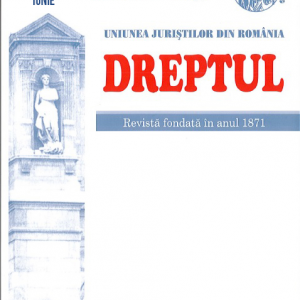 In this article the author shows that justice is one of the pillars of the state of law, which ensures the implementation of the principle of the rule of law, the foundation on which this type of state is built and developed. Likewise, the author makes brief considerations on the notion of justice, as well as on its administration, especially on the independence of judges and on the impartiality of justice. The analysis takes into account both the European standard and the Romanian law in the matter.
In this article the author shows that justice is one of the pillars of the state of law, which ensures the implementation of the principle of the rule of law, the foundation on which this type of state is built and developed. Likewise, the author makes brief considerations on the notion of justice, as well as on its administration, especially on the independence of judges and on the impartiality of justice. The analysis takes into account both the European standard and the Romanian law in the matter. -
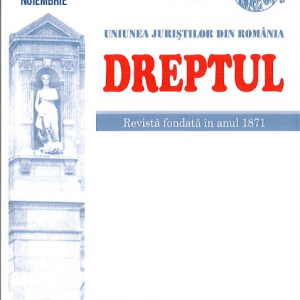 1.- La signification de la planification hydrologique dans la Directive Cadre sur l’Eau. 2.- Les retards significatifs des États dans l’application de la Directive. 3.- Les districts hydrographiques comme référence des plans hydrologiques. 4.Les autorités administratives responsables des districts hydrographiques. 5.- Les procédures d’élaboration des plans hydrologiques. 6.- Le contenu des plans hydrologiques. 7.- Valeur et effets des plans hydrologiques. 8.- Le contrôle judiciaire des plans hydrologiques. Bibliographie.
1.- La signification de la planification hydrologique dans la Directive Cadre sur l’Eau. 2.- Les retards significatifs des États dans l’application de la Directive. 3.- Les districts hydrographiques comme référence des plans hydrologiques. 4.Les autorités administratives responsables des districts hydrographiques. 5.- Les procédures d’élaboration des plans hydrologiques. 6.- Le contenu des plans hydrologiques. 7.- Valeur et effets des plans hydrologiques. 8.- Le contrôle judiciaire des plans hydrologiques. Bibliographie. -
 In this study, the author presents a constitutional reform on the Hungarian Constitutional Court, in the sense of extending its substantive jurisdiction, which entered into force at the beginning of the year 2012. Indeed, the mentioned reform preserves the classic system of the constitutional courts, but it receives an additional jurisdiction, i.e.: after a judgment has become final, either party may address to the Constitutional Court if the decision made is contrary to a fundamental right established by the Constitution. This way, concludes the author, the Constitutional Court is elevated at the level of a centre of the state power, an independent branch thereof which, in a certain sense, conducts a control on all branches of the state power.
In this study, the author presents a constitutional reform on the Hungarian Constitutional Court, in the sense of extending its substantive jurisdiction, which entered into force at the beginning of the year 2012. Indeed, the mentioned reform preserves the classic system of the constitutional courts, but it receives an additional jurisdiction, i.e.: after a judgment has become final, either party may address to the Constitutional Court if the decision made is contrary to a fundamental right established by the Constitution. This way, concludes the author, the Constitutional Court is elevated at the level of a centre of the state power, an independent branch thereof which, in a certain sense, conducts a control on all branches of the state power. -
 This paper presents an analysis of the legality of the decisions made by the administrations of the places of detainment to forbid to the persons deprived of their freedom to receive and acquire different categories of foods, decisions based on safety reasons regarding the detainment, as per Article 148 (6) in the Regulation of Enforcement of Law No 254/2013, as well as the extent to which these decisions violate or not the right to receive and buy goods according to Article 70 from the Law No 254/2013. The paper summarizes the currents of opinion formed both in the practice of the judges of surveillance of deprivation of liberty, as well in the courts by displaying certain judicial situations regarding the nature of some foods which are not particularly regulated in Annex 1, Title IV of the Regulation, situations which not even at present have received unitary unification in relation to the character of the actions taken by the prison as a restraint or a reduction of the right to receive and buy goods. The conclusions of this endeavour offer a possible solution to this problem of great actuality in practice starting from the assumption that reducing the exercise of the right to receive and buy goods is legal in the extent to which the principles of legality, equity, the realization of goals and proportionality are abided.
This paper presents an analysis of the legality of the decisions made by the administrations of the places of detainment to forbid to the persons deprived of their freedom to receive and acquire different categories of foods, decisions based on safety reasons regarding the detainment, as per Article 148 (6) in the Regulation of Enforcement of Law No 254/2013, as well as the extent to which these decisions violate or not the right to receive and buy goods according to Article 70 from the Law No 254/2013. The paper summarizes the currents of opinion formed both in the practice of the judges of surveillance of deprivation of liberty, as well in the courts by displaying certain judicial situations regarding the nature of some foods which are not particularly regulated in Annex 1, Title IV of the Regulation, situations which not even at present have received unitary unification in relation to the character of the actions taken by the prison as a restraint or a reduction of the right to receive and buy goods. The conclusions of this endeavour offer a possible solution to this problem of great actuality in practice starting from the assumption that reducing the exercise of the right to receive and buy goods is legal in the extent to which the principles of legality, equity, the realization of goals and proportionality are abided.
